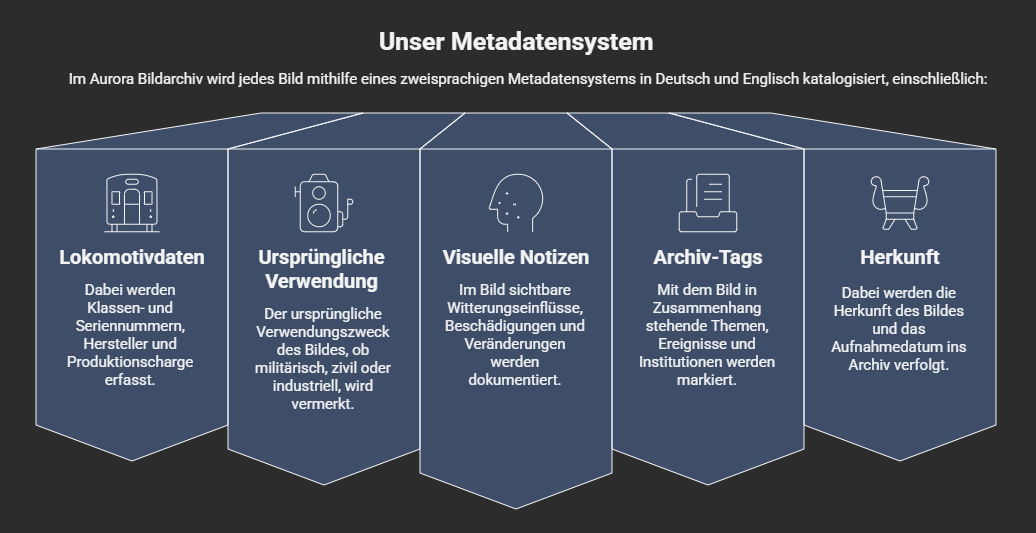
Our Location
Berlin, Germany
Call Center
+ 1-800 100 975 20 34
support@eisenbahn-bildarchiv.com
Social network
Metadata Explained
Why Metadata Matters in a Railway Photo Archive?
A photo is more than just an image. It’s a timestamp. A location. A machine. A manufacturer. A moment in history.
Without metadata, it’s just guesswork.
At Aurora, metadata is what transforms our archive from a visual collection into a trusted research and discovery tool.

What Is Metadata?
Metadata is structured information attached to every item in our archive.
It tells you:
- What you’re looking at (type, model, paint scheme, etc.)
- When the photo was taken (approximate or exact year)
- Where it was taken (station, region, country)
- Who built or operated the train
- Why it’s important (test run, post-war conversion, rare livery, etc.)

Why It’s Important
Searchability
Find specific locomotives, time periods, or regions instantly
Credibility
Every item includes its source, context, and accuracy level
Discovery
Explore new connections between trains, manufacturers, and moments in history
A Living Standard
Our metadata framework isn’t static. We update entries as new information surfaces from researchers, collectors, and institutional partners.
Each edit is versioned, reviewed, and permanently logged.
You Can Help
If you see a photo with missing or unclear data, we invite verified contributors to suggest additions. Every insight helps us build a more accurate historical record.
TOO LONG; DIDN’T READ —
Metadata, in a Nutshell
- Metadata is the context behind every photo: what, when, where, and why.
- It makes the archive searchable, trustworthy, and historically useful.
- Aurora uses a structured, bilingual metadata system- built for collectors, historians, and institutions.
- Each photo includes details like class number, location, purpose, and historical notes.
- Our metadata is constantly refined, with updates from experts and contributors.
- Without metadata, this is just a photo collection. With it, it’s a living historical archive.
